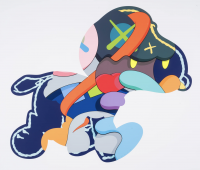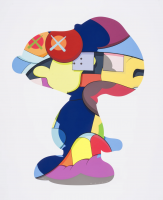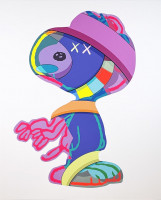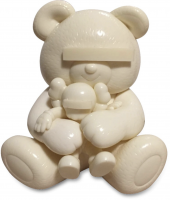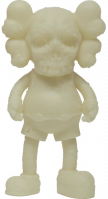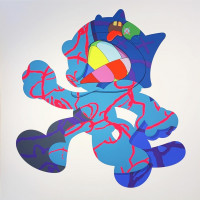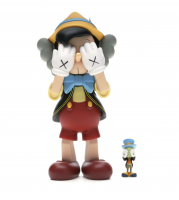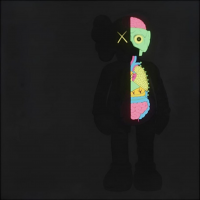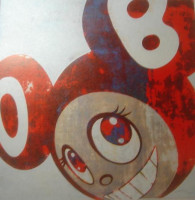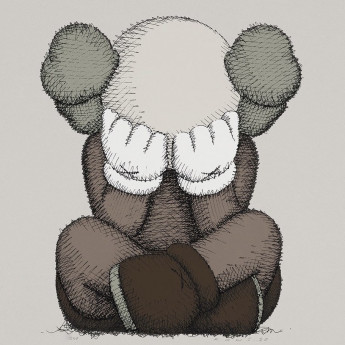
Details
Artist
Styles
Silkscreen // Running Chum #1 by KAWS, a silkscreen print from 2000, is a striking monochrome work that embodies the artist's bold, graphic style. The limited edition piece features the character Chum, one of KAWS's recurring figures, depicted in a stylized, cartoonish form with its signature crossed-out eyes. The image captures Chum mid-motion, emphasizing its plump, rounded contours and exaggerated body shape. The stark contrast between the black background and white outlines creates a powerful visual impact, showcasing KAWS’s approach of blending street art aesthetics with pop culture influences. The simplicity and boldness of the composition reflect the artist's focus on form and his critique of consumerism.
Running Chum #1, 2000
form
Medium
Size
71.1 x 50.8 cm
- Inches
- Centimeters
Edition
Price
Details
Artist
Styles
Silkscreen // Running Chum #1 by KAWS, a silkscreen print from 2000, is a striking monochrome work that embodies the artist's bold, graphic style. The limited edition piece features the character Chum, one of KAWS's recurring figures, depicted in a stylized, cartoonish form with its signature crossed-out eyes. The image captures Chum mid-motion, emphasizing its plump, rounded contours and exaggerated body shape. The stark contrast between the black background and white outlines creates a powerful visual impact, showcasing KAWS’s approach of blending street art aesthetics with pop culture influences. The simplicity and boldness of the composition reflect the artist's focus on form and his critique of consumerism.
- Recently Added
- Price (low-high )
- Price (high-low )
- Year (low-high )
- Year (high-low )
What is graffiti art?
Graffiti art refers to drawings and writings that are painted, scratched, or scribbled on walls or other surfaces, typically in public spaces. This art form ranges from small tags to elaborate wall paintings. Graffiti has been in existence since ancient times, with examples dating back to the Roman Empire, Ancient Greece, and Ancient Egypt.


